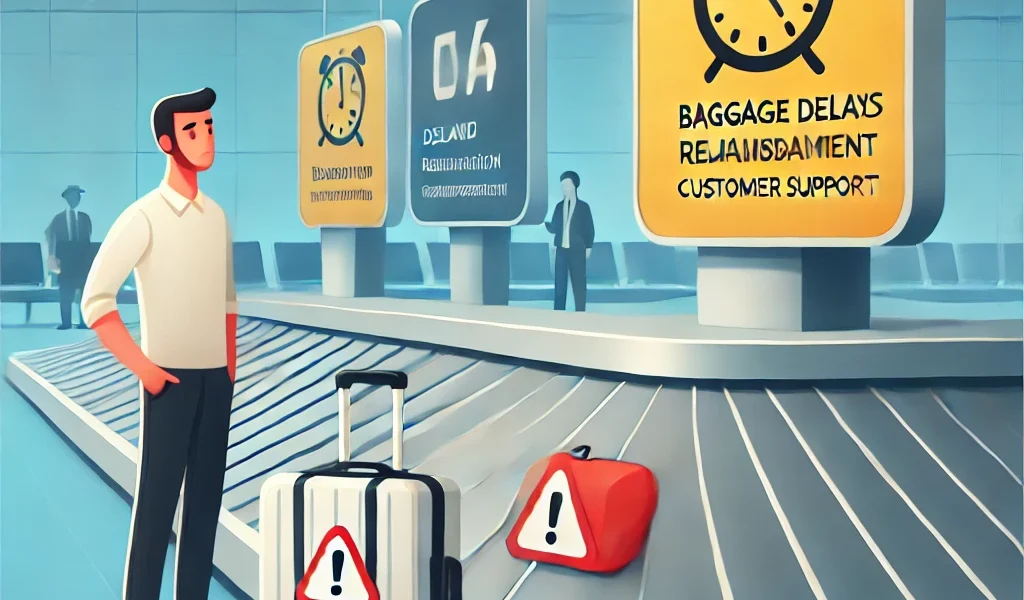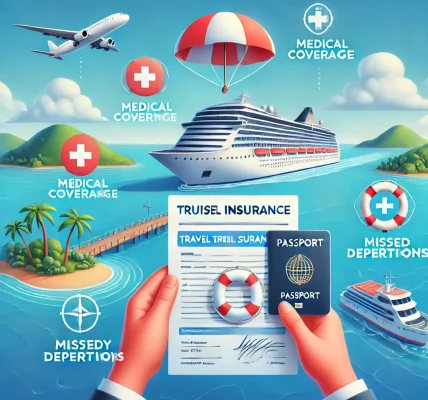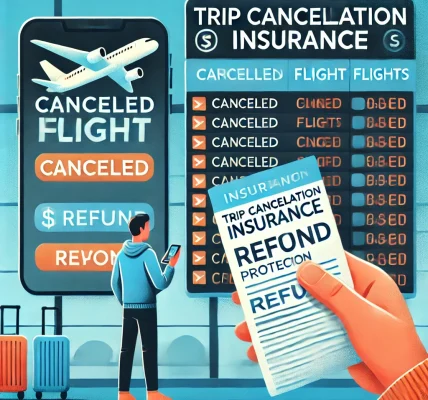Introduction
One of the biggest inconveniences a traveler can face is losing their luggage or experiencing baggage delays. Whether it’s your checked-in suitcase not arriving at your destination or getting permanently lost in transit, such incidents can ruin your trip.
This is where travel insurance comes in. A good travel insurance policy can:
✅ Compensate you for lost or delayed baggage
✅ Cover the cost of essential items while waiting for your luggage
✅ Help you recover financially if your bags are never found
In this DIY guide, we’ll cover:
- The difference between baggage loss and baggage delay
- How travel insurance protects you in both situations
- What’s covered and what’s not
- How to file a claim and maximize your reimbursement
By the end, you’ll know how to protect your belongings and avoid financial stress during your travels.
Baggage Loss vs. Baggage Delay: What’s the Difference?
1. Baggage Loss
- Your luggage is permanently lost, stolen, or damaged.
- The airline cannot locate your bags even after an extended search.
- Travel insurance reimburses you based on the value of lost belongings.
2. Baggage Delay
- Your luggage is temporarily misplaced and arrives late.
- Airlines usually recover and return your bags within a few hours or days.
- Travel insurance covers essential expenses (like clothing and toiletries) until your baggage is returned.
💡 Key Difference: Baggage loss is permanent, while baggage delay is temporary. Insurance covers both but in different ways.
How Travel Insurance Covers Baggage Loss
If your baggage is declared lost, travel insurance helps by reimbursing you for:
✅ Clothing, shoes, and personal items
✅ Electronics (laptops, cameras, phones) (up to policy limits)
✅ Toiletries and cosmetics
✅ Prescription medications (if you have proof of purchase)
✅ Lost luggage itself (suitcase, backpack, etc.)
Coverage Limits for Baggage Loss
Each policy has limits on how much they’ll reimburse. Typical limits include:
✔ $500 – $3,000 per traveler for lost baggage
✔ $100 – $500 per item (for valuables like electronics)
💡 Tip: If you’re carrying expensive items (like designer bags or jewelry), check if your homeowner’s insurance or credit card insurance offers extra coverage.
What’s NOT Covered in Baggage Loss Claims?
❌ Cash, credit cards, and traveler’s checks
❌ Passports and important documents (though some policies help with replacement costs)
❌ High-value electronics exceeding policy limits (e.g., DSLR cameras, gaming consoles)
❌ Items left unattended or lost due to personal negligence
How Travel Insurance Covers Baggage Delay
If your baggage is delayed, most travel insurance policies will:
✅ Cover the cost of essential items (like toiletries, clothes, and chargers)
✅ Reimburse you for emergency purchases
✅ Provide compensation per day (if your luggage is delayed for a long time)
Coverage Limits for Baggage Delay
✔ $100 – $500 per day for emergency purchases
✔ Coverage kicks in after 6-12 hours of delay (varies by policy)
✔ Maximum coverage of $500 – $1,500 per trip
💡 Tip: Some premium credit cards (e.g., Amex Platinum, Chase Sapphire Reserve) offer baggage delay coverage if you book your flight using their card.
What’s NOT Covered in Baggage Delay Claims?
❌ Luxury or non-essential items (like designer handbags or perfume)
❌ Purchases after your bag has been returned
❌ Baggage delays on return flights home (only applies to outbound travel)
How to File a Baggage Loss or Delay Claim
If your baggage is lost or delayed, follow these steps to ensure your travel insurance claim is approved:
Step 1: Report the Issue to the Airline Immediately
- Go to the airline’s baggage claim office before leaving the airport.
- Request a Property Irregularity Report (PIR) – This is essential for your insurance claim.
Step 2: Keep All Receipts for Purchases
- If your baggage is delayed, keep receipts of emergency purchases (toothbrush, clothing, etc.).
- If your baggage is lost, keep receipts for all lost items (if available).
Step 3: File a Claim with Your Travel Insurance Provider
- Most insurance companies allow online claims—check their website.
- Submit the PIR report, purchase receipts, and proof of travel.
- Some insurers require baggage delay claims to be filed within 20-30 days.
Step 4: Follow Up with Both the Airline and Insurance Company
- Airlines usually compensate for lost baggage first, and your travel insurance covers the remaining amount.
- Be persistent and track the status of your claim.
💡 Tip: Some policies offer baggage tracking services, which help locate lost luggage faster.
Pro Tips to Avoid Baggage Issues While Traveling
✅ Pack essentials in your carry-on – Always keep medications, documents, and a change of clothes in your carry-on.
✅ Use a GPS luggage tracker – Devices like Apple AirTag or Tile can help locate lost luggage faster.
✅ Take photos of your bag & contents – This helps prove ownership in case of a claim.
✅ Arrive early for your flight – Rushed check-ins increase the risk of baggage mishandling.
✅ Label your baggage properly – Include your name, phone number, and email on your luggage tag.
Legal Considerations: Avoiding Claim Denials
To avoid legal issues or claim rejections, follow these rules:
✔ File the PIR Report ASAP – Many insurers deny claims if you don’t report lost baggage within 24 hours.
✔ Check Airline Compensation First – Some insurers require you to claim compensation from the airline first before they pay the rest.
✔ Don’t Wait Too Long to File a Claim – Most policies have a time limit (20-30 days) to submit claims.
✔ Be Honest About Lost Items – If you overestimate values or make false claims, insurers can reject your claim or ban you from future coverage.




